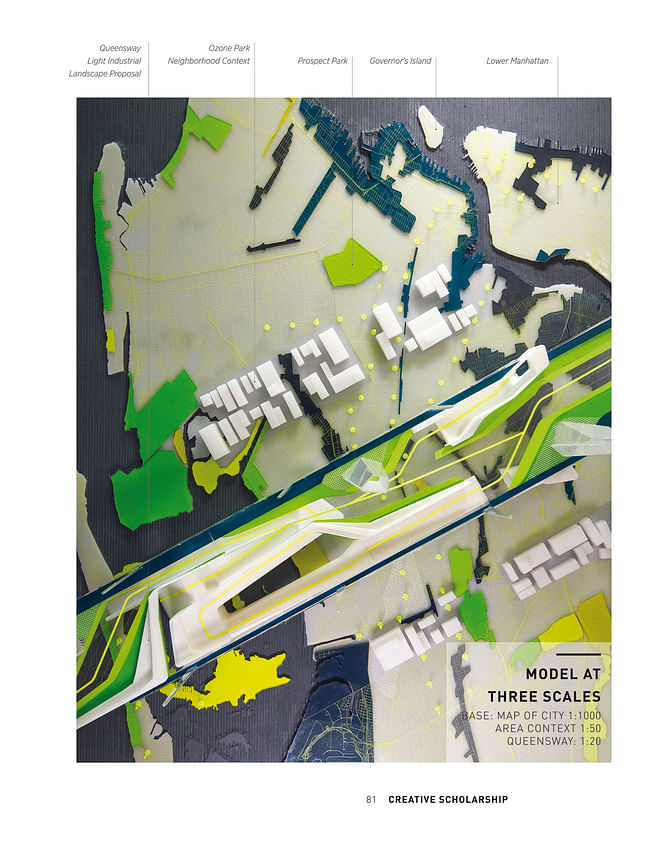Screen/Print #37: "S,M,L,XL" from the Journal of Architectural Education

Figure 1. Model at three scales. The base, which depicts Queens, New York, at 1:1,000 scale, shows streets, the subway, parks, and light industrial zones. The surrounding neighborhood is modeled at 1:50 and is layered directly on top of the base. The project proposal is modeled at 1:20 and features parks, circulation graphics, and other architectural elements. Photo by Phil Arnold, courtesy of JAE.








